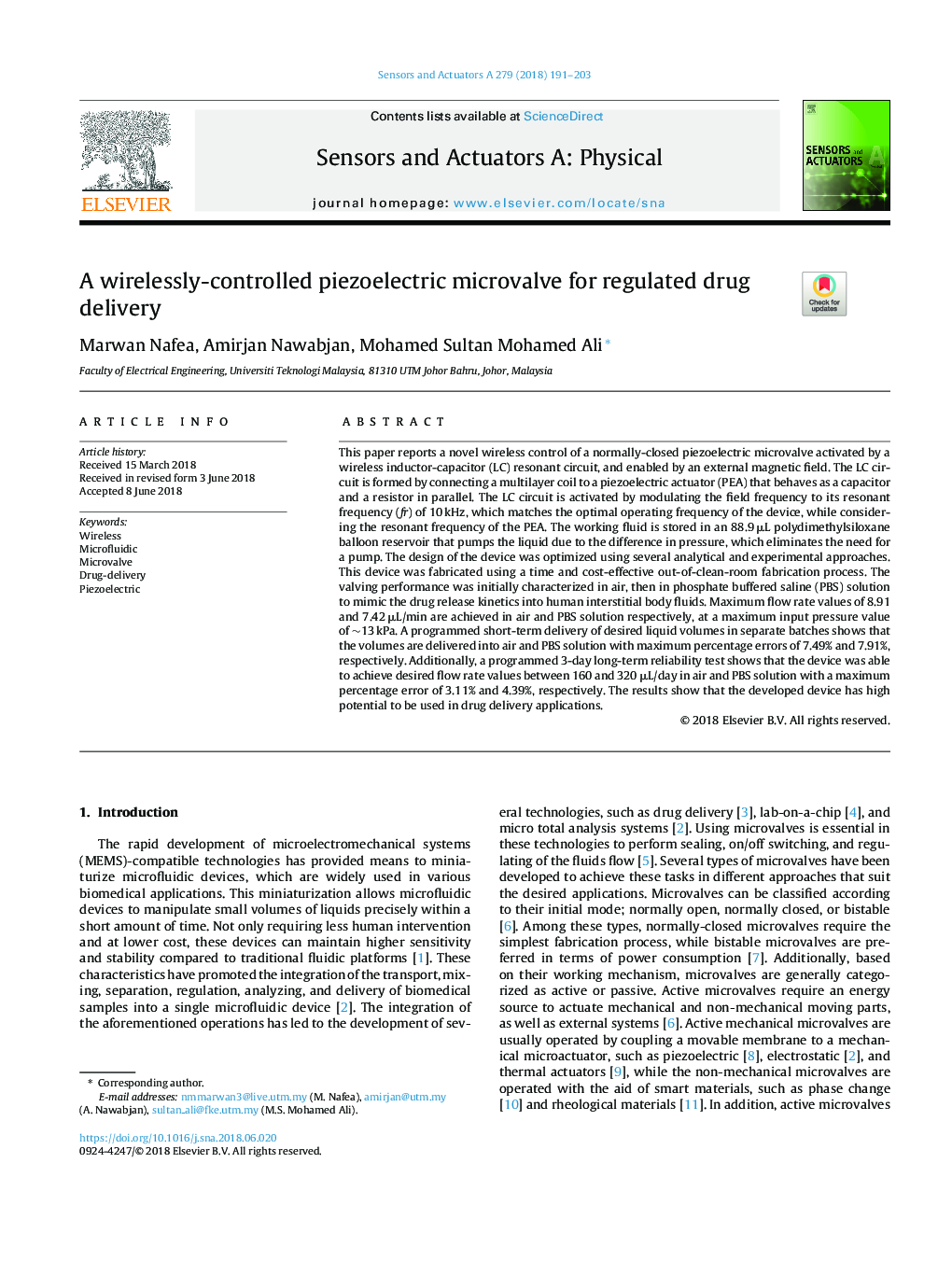| Article ID | Journal | Published Year | Pages | File Type |
|---|---|---|---|---|
| 7133359 | Sensors and Actuators A: Physical | 2018 | 13 Pages |
Abstract
This paper reports a novel wireless control of a normally-closed piezoelectric microvalve activated by a wireless inductor-capacitor (LC) resonant circuit, and enabled by an external magnetic field. The LC circuit is formed by connecting a multilayer coil to a piezoelectric actuator (PEA) that behaves as a capacitor and a resistor in parallel. The LC circuit is activated by modulating the field frequency to its resonant frequency (fr) of 10â¯kHz, which matches the optimal operating frequency of the device, while considering the resonant frequency of the PEA. The working fluid is stored in an 88.9â¯Î¼L polydimethylsiloxane balloon reservoir that pumps the liquid due to the difference in pressure, which eliminates the need for a pump. The design of the device was optimized using several analytical and experimental approaches. This device was fabricated using a time and cost-effective out-of-clean-room fabrication process. The valving performance was initially characterized in air, then in phosphate buffered saline (PBS) solution to mimic the drug release kinetics into human interstitial body fluids. Maximum flow rate values of 8.91 and 7.42â¯Î¼L/min are achieved in air and PBS solution respectively, at a maximum input pressure value of â¼13â¯kPa. A programmed short-term delivery of desired liquid volumes in separate batches shows that the volumes are delivered into air and PBS solution with maximum percentage errors of 7.49% and 7.91%, respectively. Additionally, a programmed 3-day long-term reliability test shows that the device was able to achieve desired flow rate values between 160 and 320â¯Î¼L/day in air and PBS solution with a maximum percentage error of 3.11% and 4.39%, respectively. The results show that the developed device has high potential to be used in drug delivery applications.
Related Topics
Physical Sciences and Engineering
Chemistry
Electrochemistry
Authors
Marwan Nafea, Amirjan Nawabjan, Mohamed Sultan Mohamed Ali,
